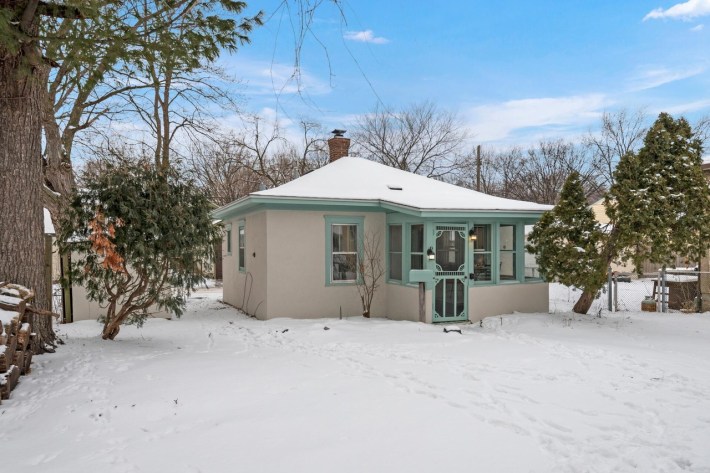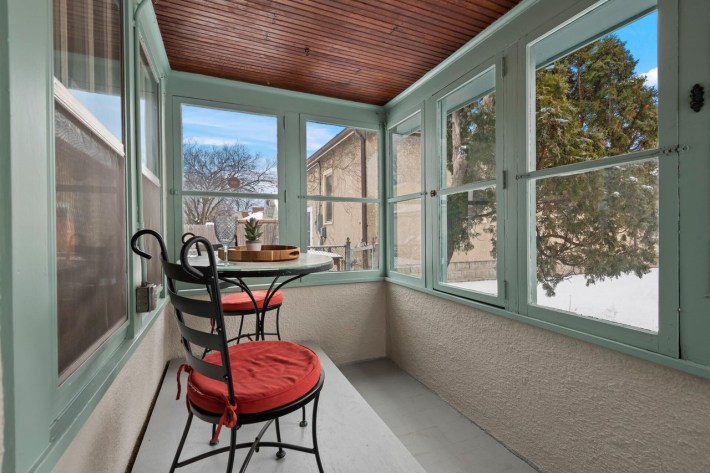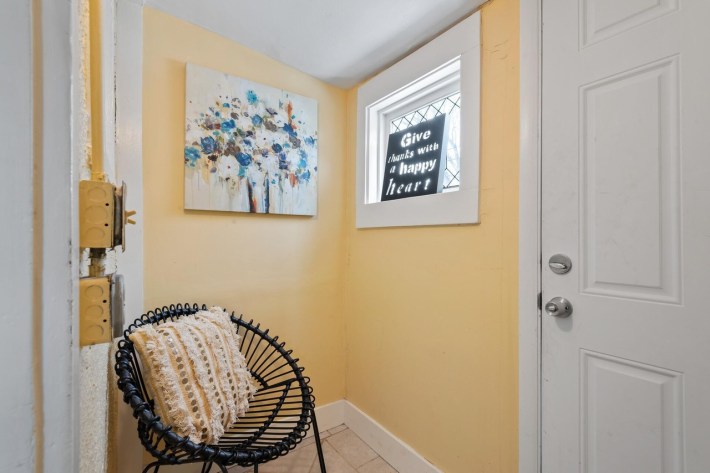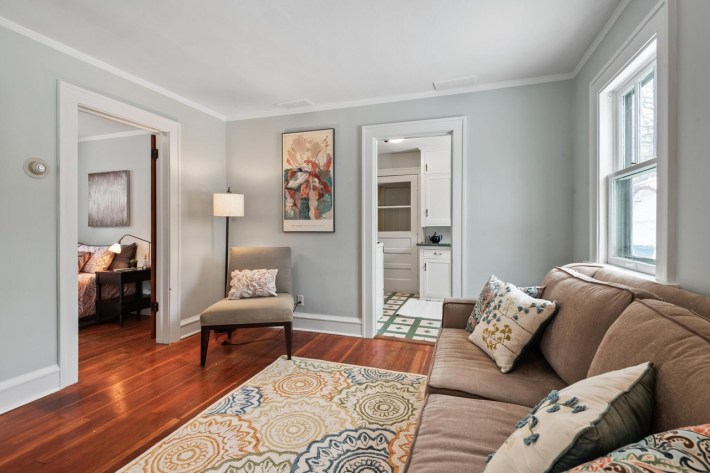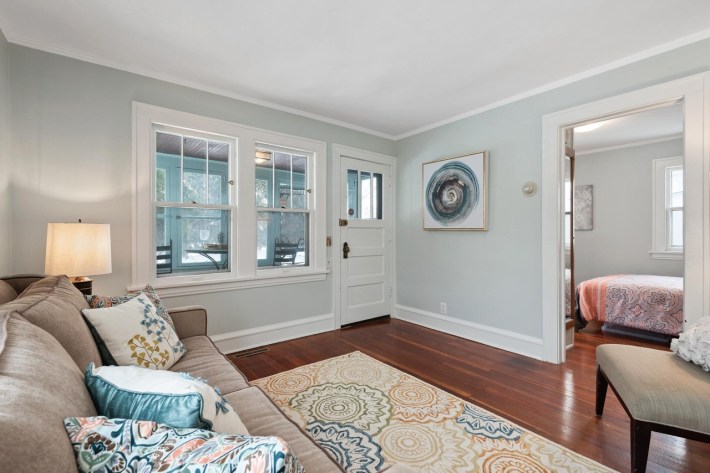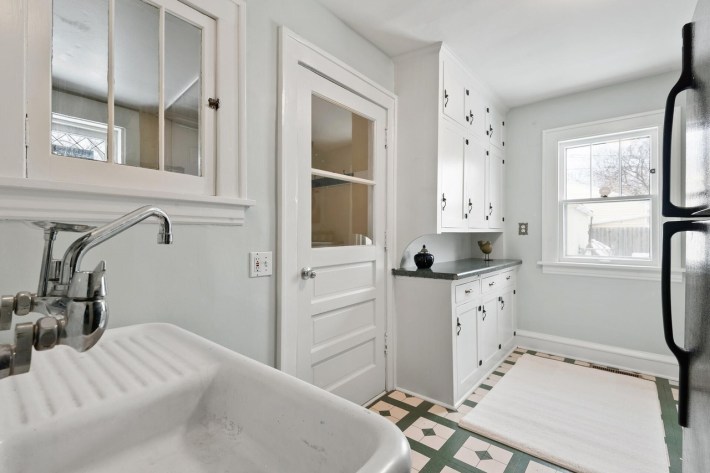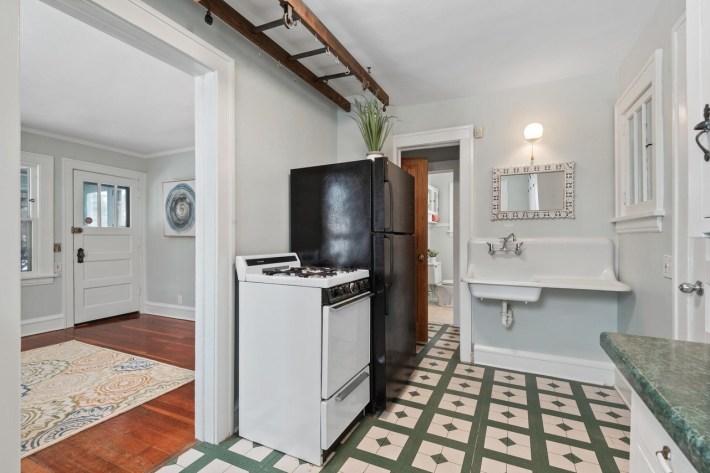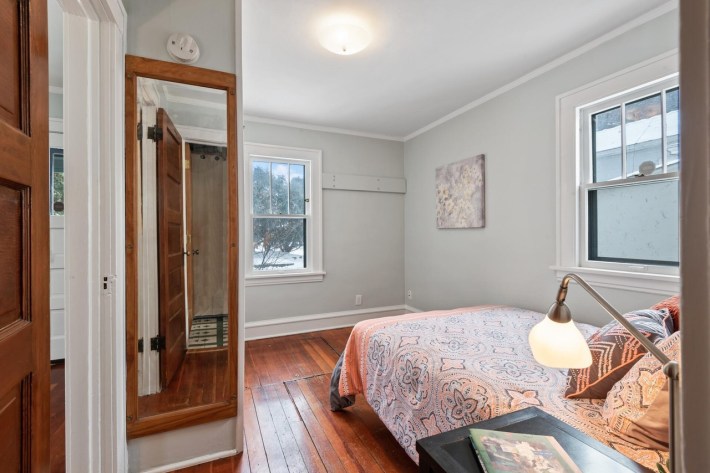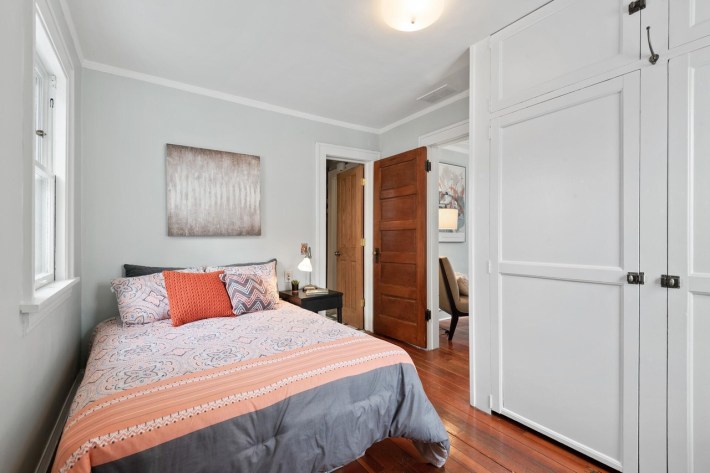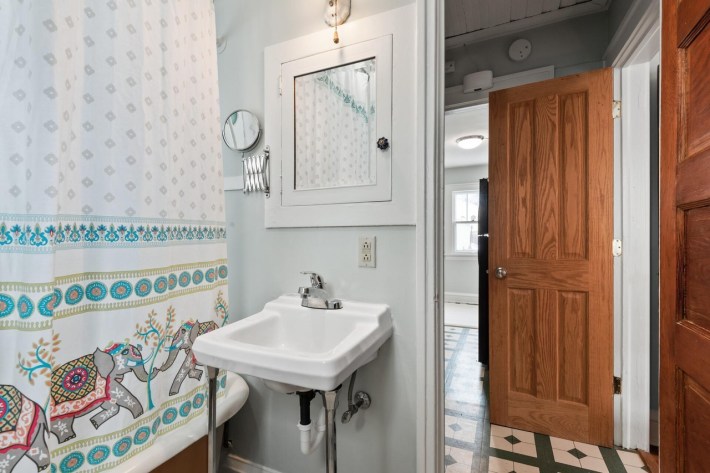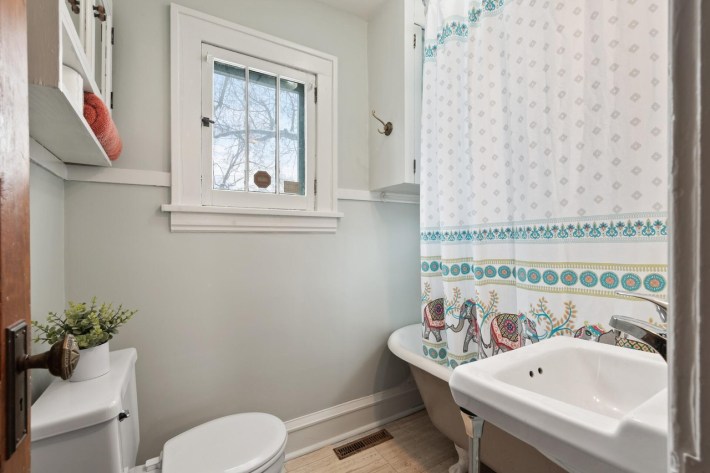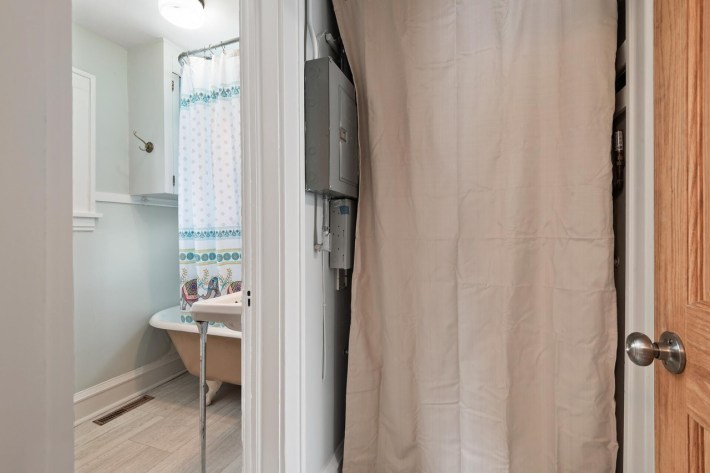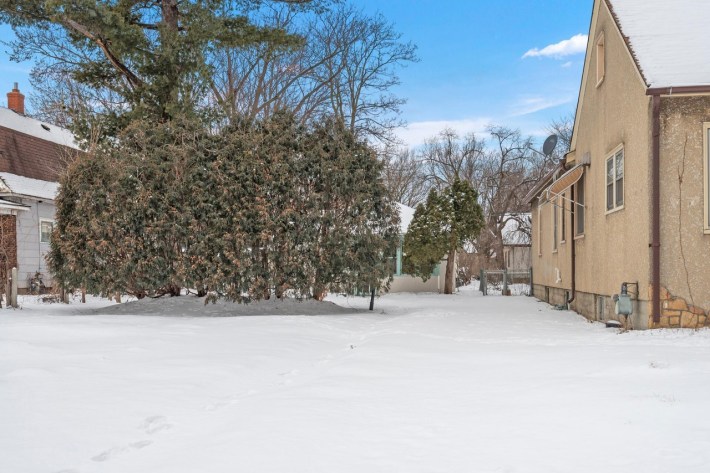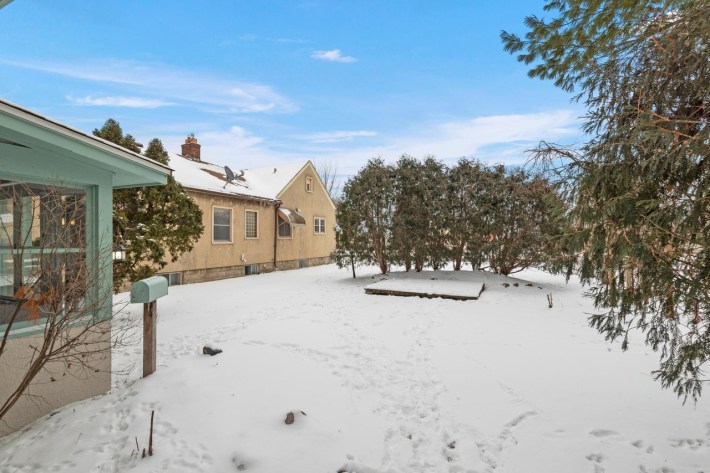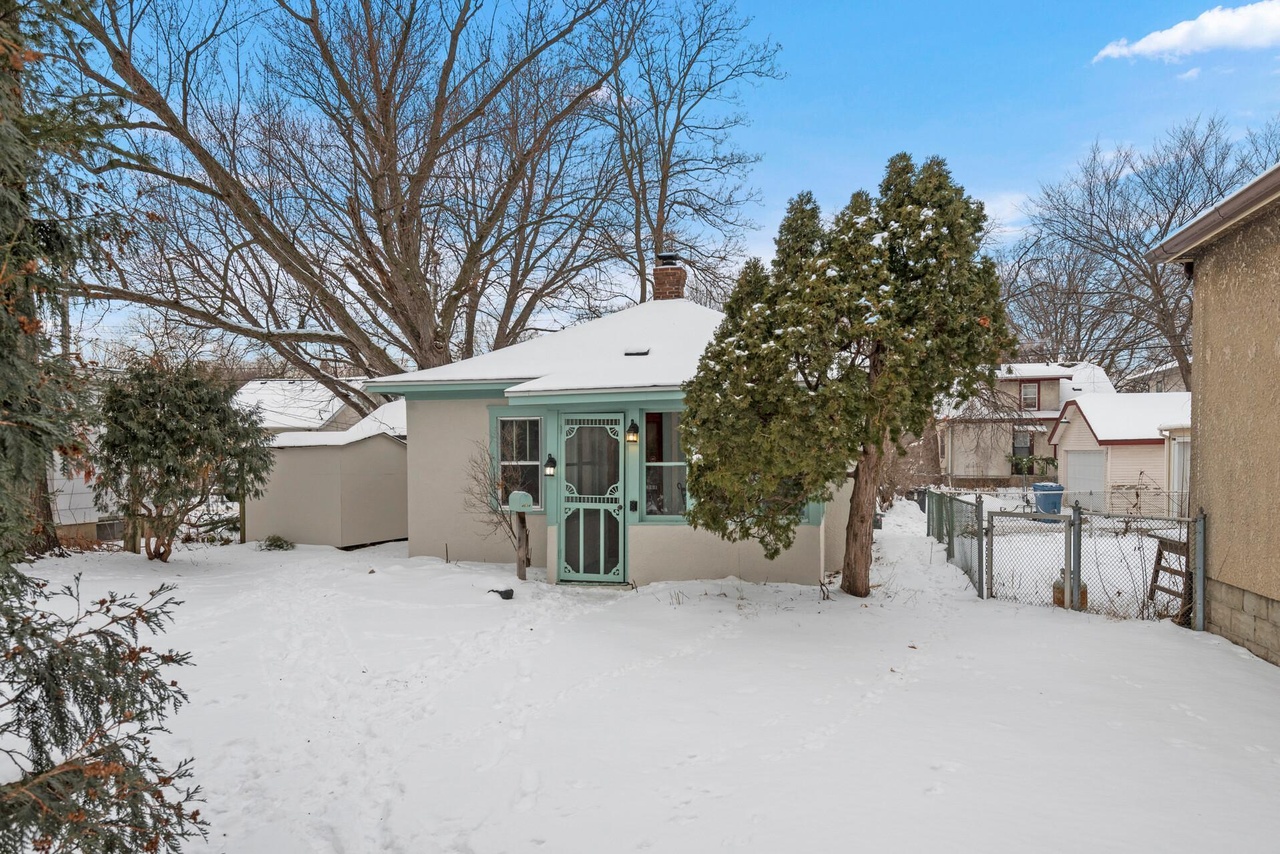Back at City Pages, I stumbled onto the tiny house beat in 2020. (In a completely unrelated turn of events, CP folded months later.) Readers were charmed by the lil huts, new and old.
At one point I declared to have found the tiniest tiny home for sale in recent history—this 376-square-footer from 1900. But! That property included an unfinished basement, thereby doubling the practical amount of interior space; it also had a garage to store your various paddle boards, boogie boards, etc.
Considering all that, I'm now prepared to bestow the tiniest tiny house crown to 4634 Bloomington Ave., which just hit the market in Minneapolis for $175,000. The pint-sized cottage from 1923 packs a whole lotta cuteness throughout its 440 square feet—no basement, no garage. The place does feature a three-season porch, original hardwood floors, newer roof and furnace, plus a mortgage cost that'll beat most nearby rent prices.
"It’s super livable," says listing agent Niki Moeller with RE-MAX Results. "It’s pretty darn tiny, but it’s so cute–it’s like a dollhouse."
Moeller happens to be an expert on the property. In 2016, after "50 or so showings" and no sale, she approached the seller she was representing with an offer: How about I buy the place for $130,000 cash? And that's exactly what happened. Moeller has operated it as a rental ever since.
The .11-acre lot in the heart of south Minneapolis is another obvious selling point. The home sits way back near the alley, Moeller notes, creating a redevelopment path where one could save the house as an accessory dwelling unit and build a full-scale structure toward the street. "There’s actually plenty of space in front. If someone wanted to go through the rigmarole of the 2040 Plan, they could with this property," she says.
How did so many tiny homes pop up around the beginning of the 20th century? Years ago I asked members of Preserve Minneapolis, but the question stumped those historical preservation wonks. Yesterday, I reached out to the authors of this historical architecture survey, but haven't heard back.
We do have two unsubstantiated theories, however. I've heard one that suggests the tiny homes were pre-development cabins in the south metro, though the '20s, '30s, and '40s vintages of the area's housing stock overlap with most tiny house construction dates. Moeller once encountered another theory.
"It’s my understanding that they built these homes so people could live in them when they came back from the war," she says. "In theory, it was supposed to be a garage, and you'd live in it while you’re building your house. With this one, it never happened."
The tiny home has forged a big-time emotional connection with former residents.
"Random people will walk up to that property who’ve lived in it over the years," Moeller says. "Everybody knows where it is, and they’ll just stop by to visit."
In other square footage news: Here's what it's like selling the largest home for sale in Minnesota, which is still available three years later at the discounted price of $5.9 million; it's roughly 22,000 square feet bigger than the smallest.
Let's take a photo tour of 4634 Bloomington Ave., courtesy of Mill City Team and RE/MAX Results. Or, see for yourself at an open house Saturday from noon to 2 p.m.
